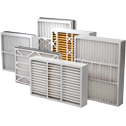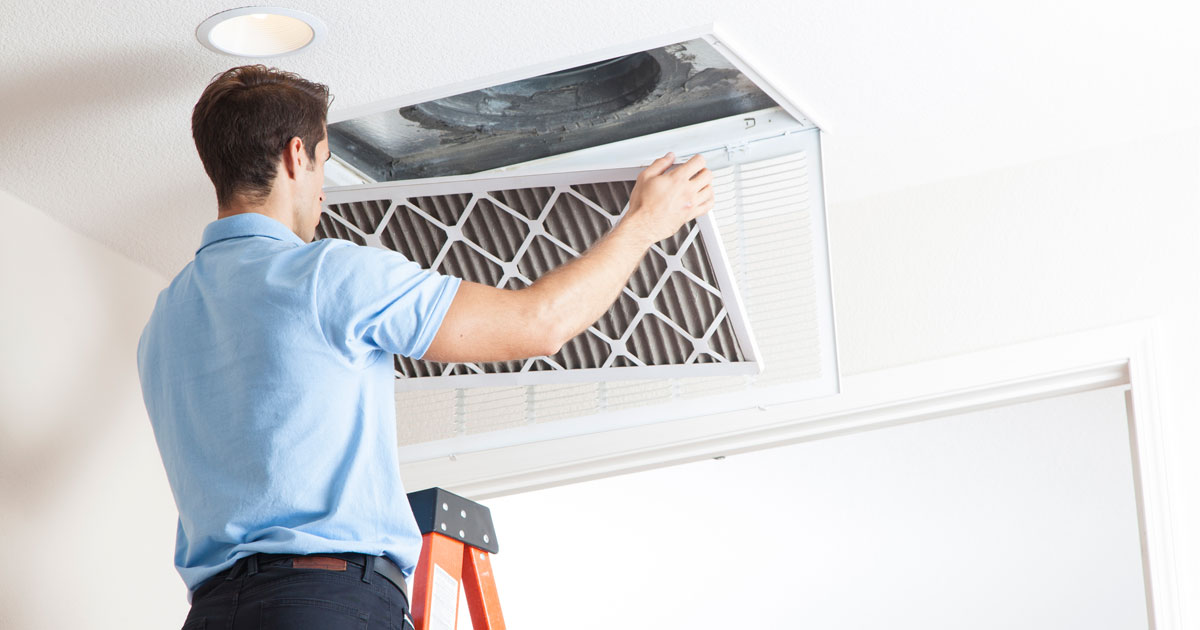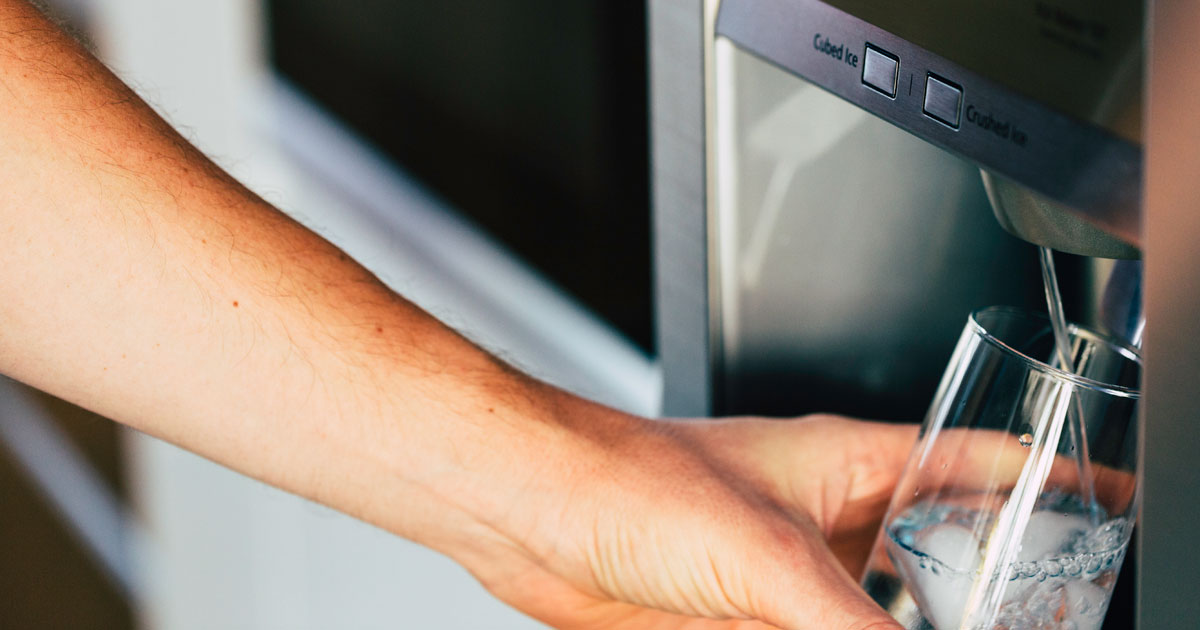Best Air Filters for Allergies: Choosing the Right MERV Rating
 Andrew
November 26, 2025
#airfilters
#allergies
#HEPA
#MERV
Andrew
November 26, 2025
#airfilters
#allergies
#HEPA
#MERV

MERV stands for Minimum Efficiency Reporting Value and is a rating system developed by the American Society of Heating, Refrigerating, and Air-Conditioning Engineers (ASHRAE) that measures how effectively filters capture particles between 0.3 and 10 microns. (You may also see MPR or FPR ratings; learn more about how these rating systems compare.) The higher the MERV number, the smaller the particles the filter can trap.
Common household allergens fall into distinct size ranges, which helps determine the minimum MERV rating needed for effective filtration. While there's not a dedicated pollen air filter, pollen particles range from 10 to 100 microns, making them relatively large and easy to capture with MERV 8 or higher filters. Pet dander typically measures 2.5 to 10 microns, while mold spores range from 3 to 40 microns. Dust mite debris falls in the 5 to 20 micron range.
MERV Ratings for Allergy Relief
So what are the best air filters for allergies? For most homes dealing with seasonal allergies or pet dander (which, by the way, is not only all those tiny flakes of dead skin cells but also allergy-triggering proteins in their hair and urine), MERV 11 filters offer excellent protection. These filters capture 85% or better of particles between 3.0 and 10 microns, including pollen, mold spores, and dander. MERV 11 represents a sweet spot in air filtration, effective enough to significantly improve indoor air quality while compatible with most residential HVAC systems.
Homes with multiple pets, family members with asthma, or severe allergy sufferers should consider MERV 13 filters, provided their HVAC system can handle the increased airflow resistance. MERV 13 filters capture 90% or better of particles between 3.0 and 10 microns and up to 50% or greater of particles as small as 0.3 microns, including some bacteria and virus carriers. This level of filtration provides stronger protection against airborne allergens and can help minimize prolonged exposure that may lead to developing or worsening allergies. (But don't only take our word for it: Check out the EPA's definitions of MERV ratings to see where we got those numbers.)
System Compatibility Matters
Before upgrading to a higher MERV rating, check your HVAC system's specifications. Older systems or those not designed for high-efficiency filters may struggle with MERV 11 or higher ratings, potentially causing reduced airflow, increased energy consumption, or equipment damage. When in doubt, consult your system's manual or an HVAC professional. Most modern residential systems handle MERV 8–13 filters without issues, but forcing an incompatible filter can do more harm than good.

HEPA (High Efficiency Particulate Air) filters represent the gold standard in air filtration, theoretically removing at least 99.97% of particles as small as 0.3 microns—roughly equivalent to MERV 17–20. While HEPA sounds superior, most homes don't need this level of filtration for allergy relief, and standard residential HVAC systems cannot accommodate HEPA filters without significant modifications.
HEPA filters require specialized systems with upgraded fans and motors to overcome their dense construction and high airflow resistance. For homes without central ductwork, older HVAC systems incompatible with high-MERV filters, or situations requiring supplemental filtration in specific rooms (bedrooms, home offices), standalone HEPA air purifiers offer some relief. These portable units work independently of your HVAC system and can target problem areas without retrofitting costs. But pay attention to cleaning or replacing filters to ensure your systems are working properly.
Consider standalone HEPA units as supplements to quality HVAC filters. A MERV 11–13 filter in your central system handles whole-home baseline filtration, while a bedroom HEPA purifier provides extra protection where you spend significant time.
Regular Maintenance Is Essential
Even the best air filter loses effectiveness when clogged with trapped particles. Replace filters every 60-90 days for most homes, or monthly during high-pollen seasons or in homes with multiple pets. Thicker whole-house filters can last 6 months to a year. Higher MERV filters require more frequent changes as they capture more particles and reach capacity faster. But this time do take our word for it: Setting calendar reminders prevents the "set it and forget it" mentality that undermines filtration effectiveness.
Tackling PM 2.5 and Smoke
Fine particulate matter (PM 2.5) and smoke present special challenges. These particles measure 2.5 microns or smaller—small enough to penetrate deep into lungs and cause respiratory issues. While MERV 13 filters capture some PM 2.5, they're not designed for heavy smoke conditions from wildfires or tobacco. During poor air quality days, supplement your HVAC filtration with portable air purifiers in frequently used rooms, keep windows closed, and run your HVAC fan continuously to maximize air circulation through your filter.
Housekeeping and Humidity Control
Air filters work best as part of comprehensive indoor air quality management. Regular vacuuming with HEPA-filtered vacuums, washing bedding weekly in hot water, reducing carpet and upholstered furniture, and maintaining humidity between 30-50% all reduce allergen accumulation.
Dust mites and mold thrive in humid conditions, while overly dry air allows particles to remain airborne longer. A quality air filter captures airborne allergens, but housekeeping prevents them from becoming airborne in the first place.
Improving indoor air quality for allergy relief doesn't require the highest-rated filter you can find. For most households, a MERV 11 filter changed regularly, combined with basic housekeeping and humidity control, provides significant relief from common allergens. Those with severe allergies or asthma may benefit from MERV 13 filters, while standalone HEPA units address specific rooms or supplement older HVAC systems.
Understanding your system's capabilities and your family's needs ensures you select the right filtration solution without unnecessary expense or equipment strain.






